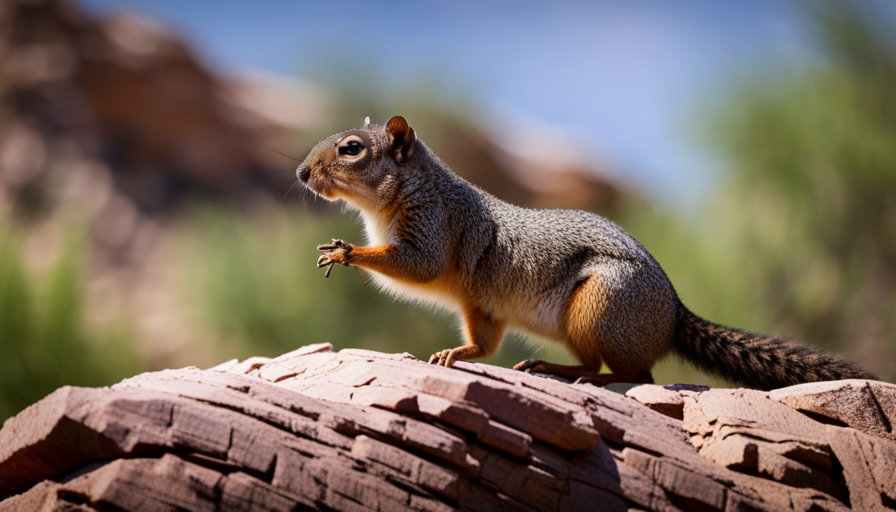The Grand Canyon is a natural wonder that attracts millions of visitors each year. While the stunning landscapes and hiking trails offer a unique experience, the presence of wildlife adds an element of danger that visitors must be aware of.
Among the various animals that inhabit the Grand Canyon, the Rock Squirrel has been identified as the most dangerous, causing the most injuries to visitors. This article aims to provide valuable information on how to avoid dangerous encounters with wildlife, with a particular focus on the Rock Squirrel.
Despite its small size, the Rock Squirrel can pose a significant threat to humans. Known for its aggressive behavior and sharp teeth, this animal can cause serious injuries if provoked or threatened. As such, it is crucial for visitors to take precautions and adhere to safety guidelines when encountering wildlife in the Grand Canyon.
This article will provide useful tips on how to stay safe and avoid dangerous encounters with animals, including the Rock Squirrel. Additionally, it will highlight the risks of interacting with wildlife and the importance of respecting their natural habitat to prevent harm to both humans and animals.
Most Dangerous Animal
The pre-existing knowledge suggests that of all the dangerous animals in the Grand Canyon, the rock squirrel poses the greatest threat as it has caused the most injuries to visitors. These diurnal animals are commonly encountered by visitors and live close to humans. However, they have lost their fear of humans and can become aggressive while searching for food. It is illegal to feed wildlife in the Grand Canyon, and doing so can lead to aggressive behavior and potentially dangerous encounters.
Visitors should keep a proper distance of at least 50 feet from small animals such as rock squirrels, and 100 feet from larger animals to avoid any potential conflicts.
The rock squirrel is a common sight in the Grand Canyon, but visitors should be aware of the potential risks associated with interacting with them. While they may appear cute and harmless, their bites can cause serious injuries, and they are known carriers of diseases. It is important to respect the wildlife in the Grand Canyon and to take precautions to avoid any potential conflicts.
Visitors should also be aware of other dangerous animals, such as elk, bison, rattlesnakes, and tarantula hawks, and should take appropriate measures to avoid any encounters that could lead to injury or harm.
Wildlife Safety Tips
Maintaining a safe distance from wildlife is crucial when visiting the Grand Canyon. Visitors are advised to stay at least 50 feet away from smaller animals and 100 feet away from larger animals. This distance not only protects visitors from potential physical harm but also prevents wildlife from becoming accustomed to human presence, which can lead to aggressive behavior.
To further ensure safety, visitors should also refrain from feeding wildlife. Feeding animals can cause them to lose their natural fear of humans and become dependent on handouts. This can result in aggressive behavior towards humans and other animals, as well as illness or death from consuming inappropriate food.
It is important to remember that wildlife in the Grand Canyon is not domesticated and should be treated with respect and caution.
Risks of Interacting with Wildlife
Interacting with wildlife in the Grand Canyon carries various risks that visitors should be aware of. One of the most common dangers is heat exhaustion and dehydration, which can be fatal in extreme cases. Visitors should always carry enough water and stay hydrated while hiking or exploring the park.
Additionally, wildlife can carry diseases that can be transmitted to humans. Visitors should avoid touching or handling animals, and wash their hands thoroughly after any contact with wildlife.
Another significant risk of interacting with wildlife in the Grand Canyon is unpredictable behavior. Visitors should never approach or attempt to feed animals, as this can make them sick or aggressive. Taking selfies with wildlife is also discouraged, as it can lead to unpredictable behavior and potentially dangerous situations. It is important to respect the animals’ space and keep a safe distance.
By following these precautions and being aware of the risks, visitors can safely enjoy the wildlife in the Grand Canyon.

